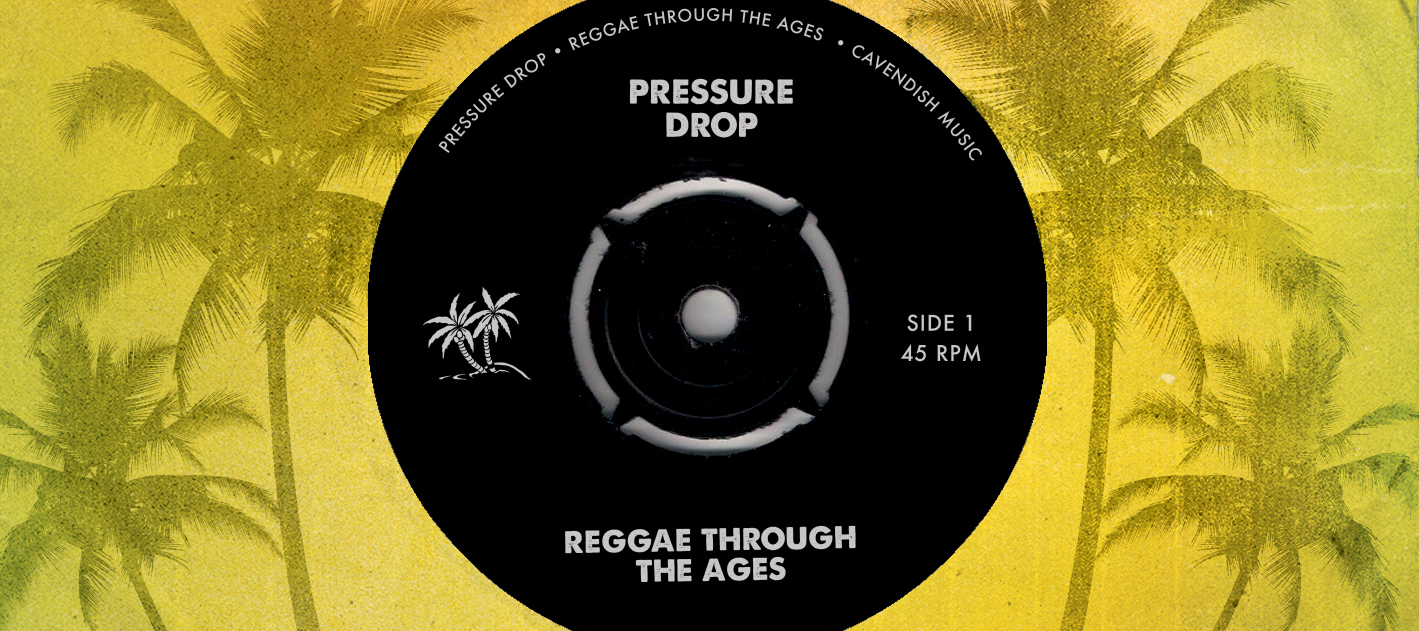NEWS
GENRE PRIMER: Reggae

To mark the release of our explosive new reggae album, ‘Pressure Drop: Reggae Through The Ages‘, we are bringing you the second in our Genre Primer Series, giving you a glimpse into the fascinating origins of Reggae!
Born out of the ghettos of ‘Trenchtown’, reggae’s distinctive rhythms and bubbling textures are unmistakable. Its eccentric qualities have since transported reggae from its humble beginnings in Jamaica to its present-day prominence as a worldwide phenomenon, spawning countless sub-genres and fusions.
To understand where reggae found its characteristic sound, one must look back to the musicians and cultural landscape of Jamaica in the mid-1960s. In 1962, Jamaica achieved independence from the United Kingdom after over three hundred years of rule. Despite the UK’s strong cultural influence on the country, this political change created a cultural vacuum. In the wake of this liberation, musicians combined Jamaican folk styles: mento and calypso, with the American jazz and rhythm and blues that could be heard on transistor radios due to powerful transmitters in New Orleans and Florida. The result of these influences was a new sound dubbed Ska, a fast-paced and positive music that reflected both a newfound optimism from the country’s independence as well as the rich multiculturalism that bore the sound itself. Artists such as Prince Buster and The Skatalites released records that began defining the sound of ska: a clear-cut emphasis on the offbeat and a deep walking bass line. Ska permeated the streets and clubs of Jamaica, thanks to the rise of the sound system. DJs would load up a truck with a powerful generator, turntables, huge speakers and the freshest dub-plates they could get their hands on, and ignite vibrant street parties. The music of Jamaica evolved and, with it, so did Rastafarian culture. Its followers favour a simple, idealistic and natural way of life, growing out their hair in long dreadlocks and adhering to a clean ‘ital’.
As with the passion and energy of the Jamaican culture, the music continued to evolve, with the formation of rocksteady. Just as with Ska, the choppy staccato chords were maintained, highlighting the offbeat and most often performed with an electric guitar or piano. The tempo slowed, which allowed for the bassist to write more complicated and syncopated parts and for the drummers to develop what is known as the one-drop. This rhythm is used almost universally throughout rocksteady and is characterized with a thumping emphasis on the third beat of the bar, usually with a hard beat of the kick drum. Rocksteady was the true precursor to reggae: soon, piano was replaced with organ, the horns retreated into the background and, as lyrics drifted from romance and towards protest, Rastafarianism and black consciousness, reggae was born. Studio technology in Jamaica had reached new heights, allowing for higher fidelity and more ambitious records, helping launch the careers of stars such as Toots and The Maytals and the world-famous poster boy of reggae, Bob Marley. Reggae became universally known as a voice for the oppressed and with the help of Jimmy Cliff and his 1972 film, The Harder They Come, reggae was spread to the masses.
Reggae has continued to evolve since the 1960s, spawning sub-genres such as dub in the early 70s, a murky and gurgling electronic spawn of reggae in which DJs and producers such as Lee ‘Scratch’ Perry manipulated instrumental tracks with expansive use of tape delay and reverb. The legendary Studio One house band ‘The Revolutionaries’ perfected a new sound known as ‘Rockers’ whose military style can be heard in Peter Tosh’s ‘Bush Doctor,’ an anthem for the legalization of marijuana, reggaes drug of choice. With the emigration of many Jamaicans to the UK in the early 1970s and Bob Marley – a global star, reggae crossed over into the white mainstream with bands such as UB40 and 10cc gaining worldwide acclaim with their reggae pop tunes. Ska enjoyed a revival known as 2 tone in the late 70s, spearheaded by artists such as The Specials and Madness based out of Coventry. This in turn inspired the punks in North America to fuse their distorted guitars with the energy of ska to form ska-punk with bands such as The Offspring and Reel Big Fish finding commercial success in the 1990s.
Reggaes influence is still felt across the board in the modern musical landscape. Nineties hip-hop icon Nas collaborated with Bob Marley’s youngest son Damian to release a critically acclaimed hip-hop reggae fusion album in 2010. British producers in the early 90s took cues from the gritty sound-system culture, borrowing the slow, deep bass lines and combining them with crudely spliced breaks to form the frenetic club genre, jungle. This was often paired with MCs reciting dancehall-inspired lyrics over the beats, just as the deejays would ‘toast’ atop instrumental dub plates in the 1960s. The murky low-end of dub reggae re-appeared in a new form as dubstep, emerging in South London in the late 90s. As globalization flourishes and genre boundaries are blurred, the sub-genres of reggae are much less clear-cut in the modern age, but the unique rhythms, experimental aesthetics and uplifting vibes of reggae infiltrate popular music comprehensively.






